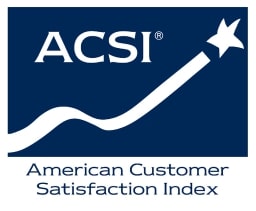If you visit gvec.net, gvec.org or GVEC Internet social media often, or if you regularly read The GVEC Internet Review, you may be familiar with the term ” Fiber to the Home ” used to describe GVEC Internet Fiber Internet. It’s a phrase that may sound self-explanatory. If you subscribe to GVEC Internet Fiber for your residence, of course you’ll receive internet “to your home.”
You might be surprised to learn, though, that GVEC Internet Fiber to the Home is much more than a throwaway string of words that state the obvious. When we mention Fiber to the Home, we’re talking about the raw materials and basic components used in building GVEC Internet’s Fiber network and delivering Fiber into every home we serve.
What is Fiber Internet? What Makes it Special?
The answers lie in the material used to construct and deliver data across fiber-based networks—glass—and the way in which fiber-optic data is transmitted—pulses of light. Each fiber-optic cable is made up of several thin strands of glass, each slightly thicker than a human hair. These fibrous strands give “fiber” its name.
Older internet networks are built from copper, which is heavier and bulkier than glass. Copper is also much more susceptible to corrosion and degradation over time. Moreover, copper-based systems transmit data via electricity and electrons, which is much slower than the pulses of light fiber-based systems use.
With fiber, data travels literally at the speed of light from transmitter to receiver, with no slowdowns along the way. Copper-based signals are not only slower, but lose speed and coherence as distance increases. Fiber signals can also carry much more data than copper, and fiber is less susceptible to weather and interference from other nearby electrical or radio-based systems.
In short, fiber is more durable, less bulky and can carry far more data at considerably greater speeds, with superior reliability. Fiber-based systems last longer, too, and offer greater flexibility as to where they can be placed in respect to other electrical and radio-based systems.
Fiber Networks Built Around Preexisting Copper
The last thing any fiber internet subscriber expects is for their fiber network to be based partially on copper technology. And yet, this is precisely what some fiber internet providers deliver—a hybrid network that retains some degree of existing copper infrastructure. Why you might ask, would any provider build such a network? Cost. Profit. Less time to build.
Such hybrid networks connect fiber-optic cable to a centralized area hub and use preexisting copper wire—leftovers from previous networks—to deliver internet the final few yards into the home. This can result in reduced reliability and speed. And of course, the copper in these networks is much more vulnerable to corrosion and degradation over time.
GVEC Internet Fiber to the Home: The Name Says it All
From our central hubs to your home, fiber-optic cable links every yard of connectivity along GVEC Internet’s network. When we say GVEC Internet Fiber to the Home, that’s exactly what we mean—from hub to home, GVEC Internet Fiber is built of 100% pure fiber and zero copper. We build our network from the ground up with the world’s fastest, most reliable internet technology.
Bring GVEC Internet Fiber to the Home to Your House
Interested in bringing GVEC Internet Fiber to the home that matters most to you and your family? Find out if Fiber’s available in your neighborhood, or sign up by calling 800-699-4832. You can also visit our Signup page, or check our Internet Availability page.

